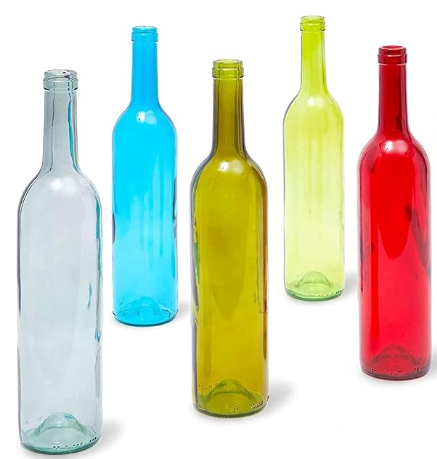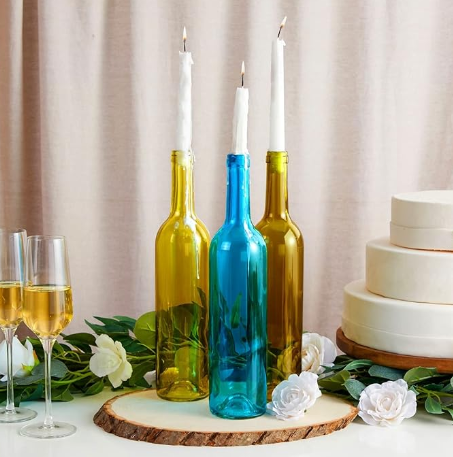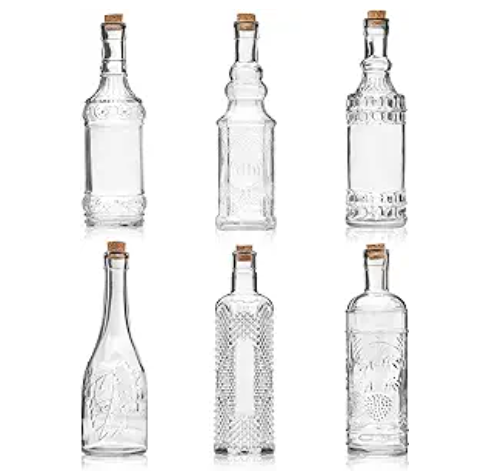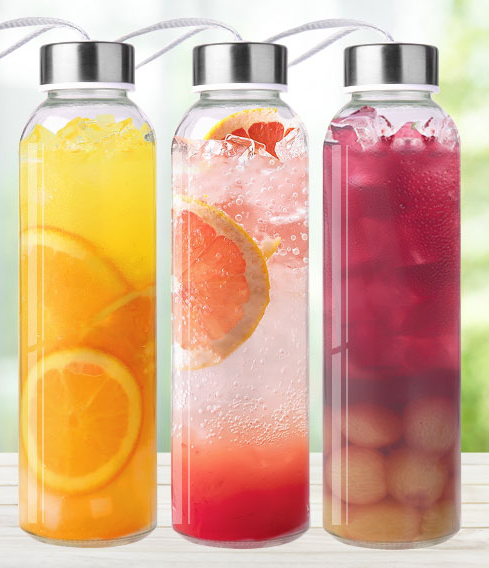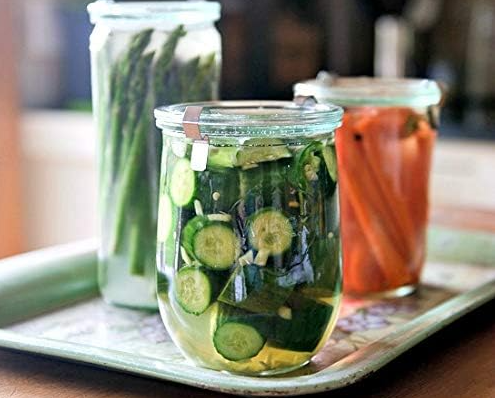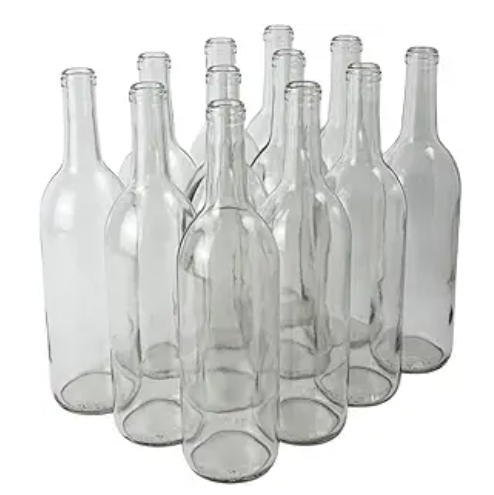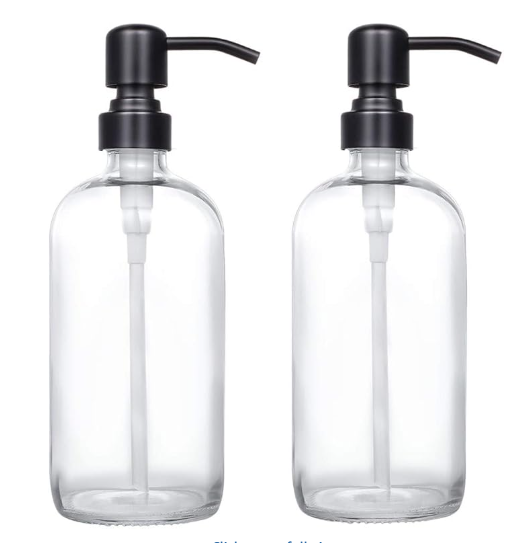Colored glass bottles have become indispensable in many industries, from cosmetics and pharmaceuticals to beverages and luxury packaging. Their vivid hues not only enhance visual appeal but also provide practical benefits such as UV protection and brand differentiation. At Paupacking, we specialize in producing premium-qualityGlass Bottlesthat combine beauty, functionality, and sustainability. This comprehensive guide explores in depth how colored glass bottles are made, the science behind glass coloring, the manufacturing processes, and the advantages of choosing Paupacking’s colored glass bottles for your packaging needs.

Introduction to Colored Glass Bottles
Glass bottles begin as a mixture of raw materials melted and shaped into containers. The addition of colorants during production transforms ordinary glass into colored glass bottles. These colors serve both aesthetic and functional purposes:
-
UV Protection:Certain colors, such as amber and green, block harmful ultraviolet rays that can degrade sensitive contents like essential oils, pharmaceuticals, or beverages. This protection extends product shelf life and maintains quality.
-
Brand Identity:Unique colors help brands stand out on crowded shelves, creating instant recognition and consumer loyalty.
-
Functional Differentiation:Colors can signal product types, quality tiers, or usage instructions, aiding consumer decision-making.
-
Aesthetic Enhancement:Colored glass adds luxury, sophistication, and visual interest, elevating the overall consumer experience.
Paupacking offers an extensive selection of coloredGlass Bottlestailored to diverse industries, ensuring each bottle meets exacting standards of quality and design.
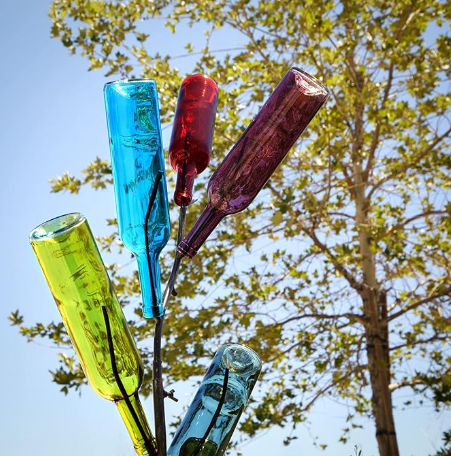

Raw Materials for Colored Glass Bottles
The foundation of any glass bottle is its raw material batch, which typically includes:
-
Quartz Sand (Silica):The primary structural component of glass, providing transparency and hardness.
-
Soda Ash (Sodium Carbonate):Lowers the melting temperature of silica, making the melting process more energy-efficient.
-
Limestone (Calcium Carbonate):Adds durability and chemical resistance to the glass.
-
Colorants:Metal oxides or compounds that impart specific colors to the glass.
The precise formulation and quality of these raw materials are critical to achieving consistent color, clarity, and strength. Paupacking sources high-grade raw materials and employs precise batching techniques to ensure our coloredGlass Bottlesmeet stringent quality requirements.


The Science of Glass Coloring: Coloring Agents and Their Effects
Color in glass is primarily achieved by adding metal oxides or compounds to the molten glass batch. Each element produces distinctive hues based on its chemical properties and concentration:
-
Iron Oxides:Responsible for green and brown shades; naturally occurring in sand, but controlled additions create specific tones.
-
Chromium Oxide:Produces deep green colors, often used in beverage bottles.
-
Manganese Dioxide:Yields purple or amethyst hues; historically used to counteract green tint.
-
Cobalt Oxide:Creates striking deep blue glass, popular in cosmetics and luxury packaging.
-
Gold Chloride:Used to produce rich ruby red glass, prized for its brilliance and rarity.
-
Selenium Compounds:Impart red and pink tones; often combined with other colorants for nuanced shades.
-
Copper Compounds:Generate light blue or reddish hues depending on oxidation state.
-
Sulfur Compounds:Used to create amber or brown glass, providing excellent UV protection.
-
Antimony Oxides:Produce white or opaque glass, sometimes used for decorative effects.
-
Uranium Oxides:Historically used for yellow-green glass with a unique glow, now rare due to safety concerns.
By carefully balancing these colorants, manufacturers can produce a wide spectrum of colors and effects, from subtle pastels to vibrant jewel tones. Paupacking’s expertise in color formulation ensures ourGlass Bottlesachieve consistent, vivid colors tailored to client specifications.
Step-by-Step Process of Making Colored Glass Bottles
1. Batching and Mixing Raw Materials
The process begins with precise measurement and mixing of raw materials, including base ingredients and colorants. This batching process is critical for color consistency and glass quality. Modern batching systems use automated controls to weigh and mix components accurately, minimizing human error and ensuring reproducibility. Paupacking employs such advanced batching technology to maintain the high standards of our coloredGlass Bottles.
2. Melting in High-Temperature Furnaces
The mixed batch is fed into a furnace operating between 1400°C and 1600°C. At these extreme temperatures, raw materials melt and fuse into a homogeneous molten glass. During melting, colorants dissolve uniformly, ensuring consistent coloration throughout the glass mass.
State-of-the-art furnaces are equipped with sensors and automated controls to monitor temperature, fuel efficiency, and glass viscosity. Maintaining precise melting conditions is essential to avoid defects such as bubbles, streaks, or color inconsistencies. Paupacking’s production facilities utilize cutting-edge furnace technology to guarantee the clarity and uniformity of our coloredGlass Bottles.
3. Forming the Bottles
Once molten, the glass is shaped into bottles using advanced forming methods:
-
Blow and Blow:This traditional method involves forming a preliminary shape called a parison by blowing molten glass into a mold, followed by a second blowing to finalize the bottle shape. It is ideal for narrow-neck bottles like beverage containers.
-
Press and Blow:In this method, molten glass is first pressed into a mold to form the base, then blown to shape the body. It allows for more complex shapes and is commonly used for jars and wide-mouth bottles.
During forming, temperature and timing are tightly controlled to prevent defects and ensure uniform wall thickness. The forming molds are made from durable materials that withstand high heat and pressure, ensuring precision and longevity.
4. Annealing and Controlled Cooling
After shaping, bottles enter an annealing oven where they undergo gradual cooling. This annealing process relieves internal stresses caused by rapid temperature changes during forming. Proper annealing is crucial to prevent cracking, warping, or breakage during handling and use.
The annealing schedule—temperature and duration—is carefully programmed based on bottle size, thickness, and glass composition. Paupacking’s annealing ovens utilize advanced temperature controls to optimize bottle strength and durability for our coloredGlass Bottles.
5. Surface Treatments and Finishing (Optional)
Some colored glass bottles receive additional surface treatments to enhance color vibrancy, durability, or special effects:
-
Spray Coloring:Applying pigments onto the bottle surface followed by reheating in a reducing atmosphere can intensify colors, especially for red glass.
-
Coatings:Protective or decorative coatings may be applied to resist scratches or provide matte, glossy, or iridescent finishes.
-
Etching or Printing:Logos, patterns, or labels can be etched or printed onto the glass surface for branding and decoration.
Paupacking offers customized finishing options to meet diverse client needs, enhancing the appeal and functionality of our coloredGlass Bottles.
6. Quality Control and Packaging
Finished bottles undergo rigorous quality inspections for color consistency, clarity, dimensional accuracy, and structural integrity. Automated vision systems detect defects such as bubbles, cracks, or color variations, while manual inspections verify surface finish and labeling accuracy.
Only bottles meeting Paupacking’s stringent quality standards are packaged for shipment. Our packaging solutions ensure safe transport and storage, preserving the pristine condition of our coloredGlass Bottles.
Alternative Coloring Techniques
Beyond traditional coloring through batch additives, other innovative methods include:
-
Spray Coloring:Pigments are sprayed onto the surface of formed bottles and then fixed by reheating. This allows for vibrant colors without altering glass composition.
-
Fuming:Metal vapors are deposited onto the glass surface, creating iridescent or metallic finishes prized in decorative and artistic applications.
-
Colloidal Particle Coloring:Nanoparticles of metals like gold or silver suspended in glass produce unique optical effects such as ruby red or yellow hues.
These techniques expand design possibilities, allowing Paupacking to offer bespoke coloredGlass Bottlesthat meet specialized aesthetic and functional requirements.
Advantages of Colored Glass Bottles
Colored glass bottles offer numerous benefits:
-
UV Protection:Amber and green glass effectively block ultraviolet light, protecting light-sensitive contents and extending shelf life.
-
Brand Differentiation:Unique colors help products stand out on retail shelves, enhancing brand recognition and consumer appeal.
-
Recyclability:Colored glass is fully recyclable without degradation of quality, supporting circular economy goals.
-
Durability:Colored glass often exhibits enhanced chemical and physical resistance, making it suitable for demanding applications.
-
Aesthetic Appeal:Vibrant colors add a sense of luxury and sophistication, elevating packaging beyond mere containment.
Paupacking’s coloredGlass Bottlesembody these advantages, combining eco-friendly materials with exquisite design to meet modern market demands.
Applications of Colored Glass Bottles
Colored glass bottles are widely used across industries:
-
Cosmetics:Blue and amber bottles protect essential oils and serums while conveying luxury.
-
Beverages:Green and brown bottles are traditional choices for beer, soft drinks, and specialty beverages.
-
Pharmaceuticals:Amber bottles safeguard medicines from light degradation.
-
Food:Colored jars preserve sauces, jams, and condiments while enhancing shelf appeal.
-
Luxury Goods:Custom-colored bottles elevate perfumes and high-end products.
Paupacking’s versatile coloredGlass Bottlescater to these diverse sectors, offering tailored solutions for every packaging challenge.
Caring for Colored Glass Bottles
To maintain their beauty and functionality:
-
Avoid abrasive cleaners that can scratch or dull the surface.
-
Store away from extreme temperature fluctuations to prevent thermal shock.
-
Clean with mild detergents to preserve color vibrancy.
-
Recycle or repurpose bottles responsibly to support sustainability.
Proper care extends the life and appeal of colored glass bottles, maximizing their value.
Why Choose Paupacking for Colored Glass Bottles?
Paupacking is a leader in producing high-quality coloredGlass Bottlesthat meet the exacting demands of modern packaging:
-
Premium Raw Materials:Ensuring clarity, strength, and consistent color.
-
Advanced Manufacturing:Employing state-of-the-art technology for precision and efficiency.
-
Customization:Offering a wide range of colors, sizes, and finishes.
-
Sustainability:Committed to environmentally responsible production and recycling.
-
Customer Support:Providing expert guidance and tailored solutions.
Partnering with Paupacking guarantees superior colored glass bottles that enhance your product’s market appeal and performance.
Comparison Table: Glass Coloring Methods and Characteristics
| Coloring Method | Description | Color Consistency | Durability | Cost Efficiency | Typical Colors | Application Examples |
|---|---|---|---|---|---|---|
| Metal Oxide Addition | Adding metal oxides to molten glass batch | High | High | Moderate | Green, Blue, Amber, Purple | Beverage, Cosmetics |
| Spray Coloring | Applying pigment spray post-formation | Moderate | Moderate | High | Red, Gold, Special Effects | Decorative, Luxury Packaging |
| Colloidal Particle Coloring | Nanoparticles create color via light scattering | High | High | Low | Ruby Red, Yellow, Metallic | High-end Cosmetics, Art |
| Fuming | Metal vapor deposition on glass surface | Variable | Moderate | Low | Iridescent, Metallic | Specialty Items |
Conclusion
The creation of colored glass bottles is a sophisticated process that blends chemistry, engineering, and artistry. By selecting premium raw materials, incorporating precise colorants, and utilizing advanced forming and finishing techniques, manufacturers like Paupacking produce coloredGlass Bottlesthat meet the highest standards of quality and design.
Colored glass bottles not only protect and preserve their contents but also elevate brand identity and consumer experience. Paupacking’s commitment to excellence and sustainability ensures every bottle embodies elegance, durability, and environmental responsibility.
Explore Paupacking’s extensive collection of coloredGlass Bottlesto find the perfect packaging solution that combines beauty and performance for your products.




